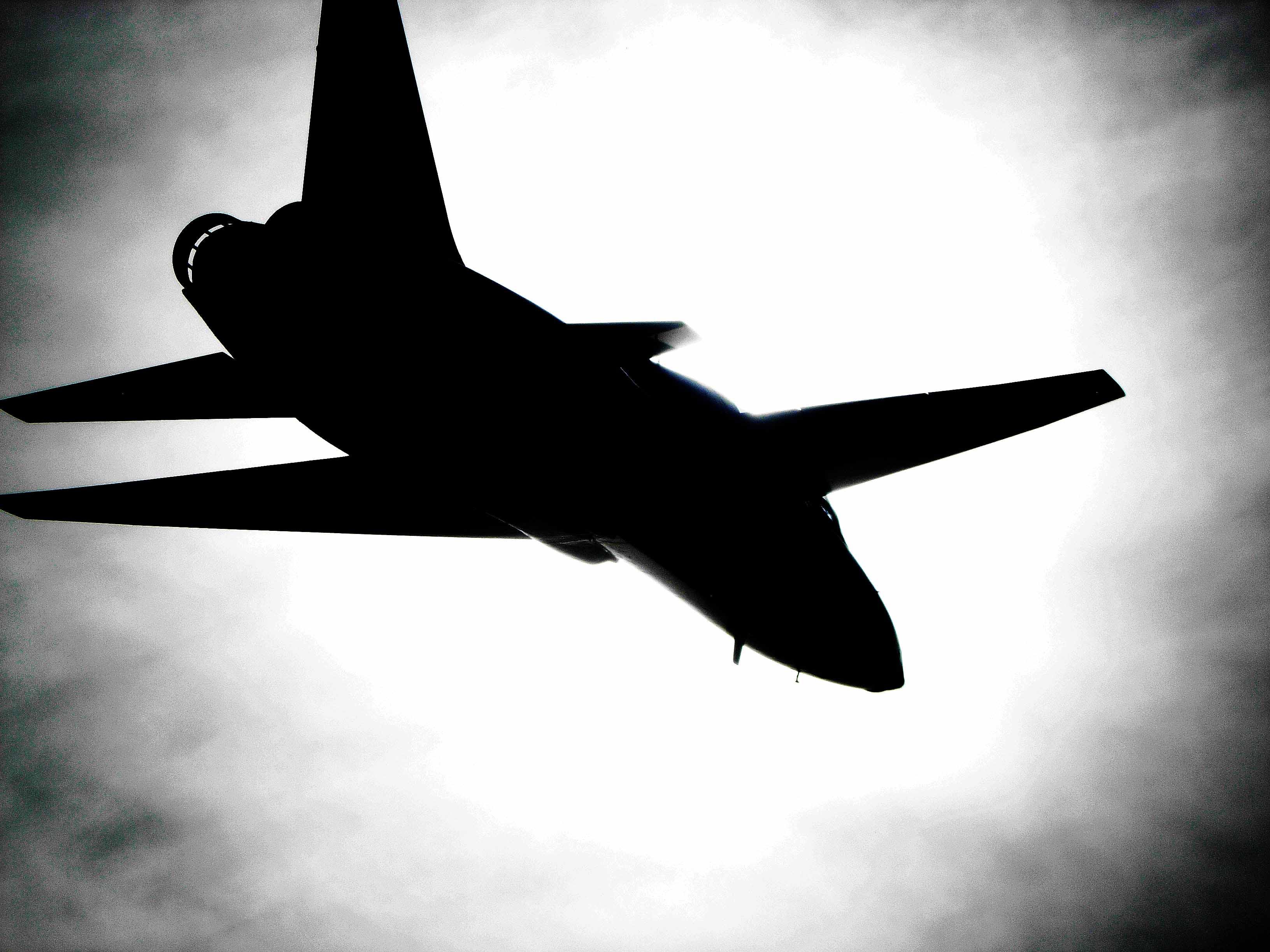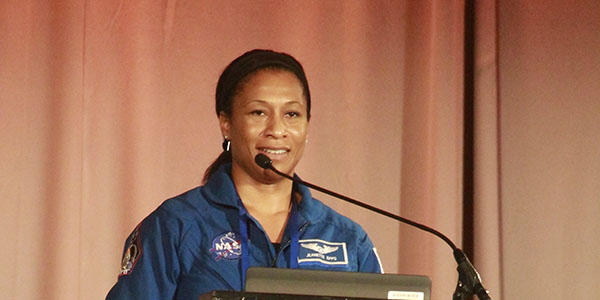Worldcon 74: So You Want To Be An Astronaut?

Is there any child in the modern era who never dreamed of being an astronaut? It seems hard to believe. Certainly this author spent a sizable chunk of her formative years geeking out on the space shuttle and reading up on the amazing world beyond the sky. That’s why it’s such a treat to have an actual astronaut at Worldcon. Better still, she came to talk about how she got to that place in life, and how others can follow in her footsteps.
Dr. Jeanette J. Epps was one of seven children, born in Syracuse, New York. She got her Bachelors in physics from Le Moyne College, and went on to get her postgraduate degrees in aerospace engineering from the University of Maryland. After getting her PhD, she took a job at the Ford Motor Company doing research, during which time she was awarded two patents. After being recruited to the CIA, she began to transition from research to operations, using stuff designed in the lab in the field.
At the time, she knew folks in the astronaut program, but didn’t think she had a chance. Still, she felt that it was something she’d have to do soon if she ever would, and knew she would regret it if she didn’t try at least once. To her surprise, she was accepted, and became part of the 2009 class of Astronaut Candidates, or “AsCans”.
One of the most important tools in astronaut training is, surprisingly enough, a jet airplane. The T-38 trainer is a workhorse plane where would-be astronauts learn to work in a high threat environment, in small cramped spaces, with exposure to variant g-forces. While riding a T-38, candidates learn firsthand about crew coordination and communications. Plus, the controls are very similar to the ones needed for robotics operation. It gives you in one place pretty much everything you need to learn to fly in space.

Speaking of robotics, that’s a pretty major part of the training these days as well. Robotic arm manipulation is a vital part of the International Space Station (ISS), where it used for maintenance and even for helping dock ships to the station. It takes a lot of practice to be able to manipulate the arm without damaging anything. Also, crew mates may be on the arm while you’re running it, so even more reason to be careful.
Extra-Vehicular Activities (EVAs) are a bigger and bigger part of the day-to-day operations of the ISS as components get older and need maintenance. To practice, NASA has the neutral buoyancy lab, basically a giant (6.2 million gallons!) pool with an ISS mock-up inside (this writer remembers when it held a mock-up of the shuttle cargo bay). There, candidates can practice maintenance tasks in a simulated zero-G environment. The average task takes about 6 hours, working nonstop in a highly demanding environment. The EVA suit weighs 310 pounds, and underneath it is a liquid cooling garment and what as known as the MAG (maximum absorbency garment — yes, a diaper. Six hours is a long time.) It takes hundreds of hours of practice before one can perform a real EVA.

One of the toughest aspects of the training is NOLS (National Outdoors Leadership School) Expeditionary Training. This involves the whole class roughing it out in the wilderness for 10 days, with only 2 sets of clothes, plus a 50 lb pack with your water supply. According to Dr. Epps, you really find out who someone is under these circumstances. The knowledge that comes from being together under extreme circumstances can be immensely useful later on in the actual mission.
Every candidate must undergo field medical training: IVs, suturing, catheter insertion, etc, followed by taking shifts in an actual ER. This is because there isn’t always a designated medical officer on board, so everyone should have at least basic knowledge.
Field geology is where the candidate goes out to different geological sites to find things similar to environments they may find on other worlds. For example, Dr. Epps went to Kilauea Caldera in Hilo, HI, because it bears certain resemblances to what we have seen of Mars. She also got to go see Meteor Crater, AZ, where the Apollo crew trained with the moon buggy.
![We've come a long way from this moon buggy, used for Apollo 15. [Photo courtesy NASA/Wikimedia Commons]](http://SciFi4Me.com/wp-content/uploads/2016/08/800px-Apollo15LunarRover.jpg)
After that, the waiting for an actual mission begins. The Soyuz goes up two to three times a year, with three people inside, two Americans max. Astronauts board the ISS for a six-month term, performing maintenance, EVAs, and experiments. Lots and lots of experiments.
When their time is up, the return trip is via what is euphemistically referred to as a “ballistic” landing. It’s a rough landing, but the parachutes and cushions at least make it bearable. Unfortunately, there is the possibility of a water landing. This can be very bad: the passengers would have to change into their waterproof gear and escape the capsule. The parachute could even drag the capsule underwater. As part of an astronaut’s training in Russia’s Star City, they must undergo practice water landings so they know what to do. They must also train in the use of the Sokol suit, the Russian space suit, which design hasn’t changed in over thirty years.
![Peggy Whitson wearing an inflated Sokol-KV2 spacesuit. [Photo courtesy NASA/Wikimedia Commons]](http://SciFi4Me.com/wp-content/uploads/2016/08/800px-Expedition_16_suit_up.jpg)
Being an astronaut is clearly one of the most strenuous and demanding jobs in the world, and understandably so. And yet, there are so many of us in the world who would, given the chance, drop everything for the chance to take it on. Seven years ago, Dr. Epps did. And now, she has been chosen for a mission in May 2018.
Perhaps the most important thing is something she said at the beginning of the talk, which every young budding space explorer should take to heart:
“If I can do this, there’s no reason you can’t do this.”
For more coverage on Worldcon, check out this link for articles and interviews.
Kelly Luck wanted to be an astronaut, but was rejected for making one-too-many disparaging remarks about Tang. Her other SciFi4Me work can be read here.
![]()




